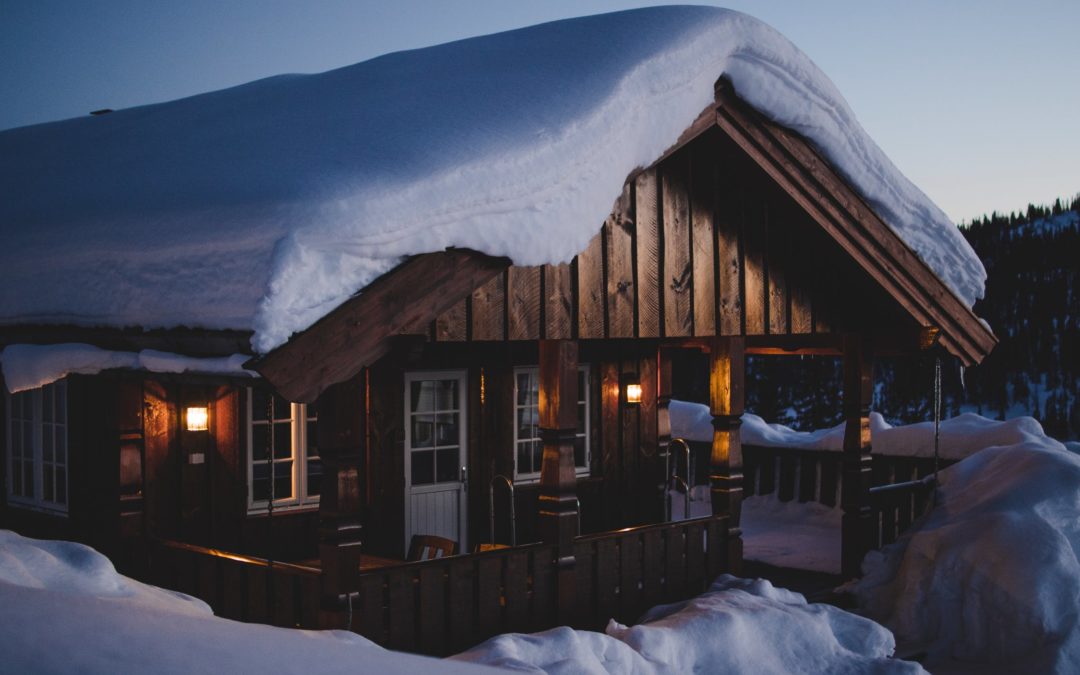But how do you know how much snow is too much for your roof to handle, and what can you do to protect your roof from snow damage? Check out our guidelines below before the next snowstorm comes calling.
How Much Snow a Roof Can Hold Depends on the Type of Roof and Type of Snow
Most residential roofs in good condition can hold 20 pounds of snow per square foot. This can vary based on your roof’s age, the materials your roof is made from, and the design of your roofline. The amount of snow that adds up to 20 pounds can vary as well, depending on whether the snow is the fluffy type or that dreaded wet and heavy kind.
Light snow can weigh around 3 pounds per square foot, so your roof can hold several feet of it. However, wet, packed snow can weigh 21 pounds per square foot — and ice as much as 51 pounds! — which can cause collapse with only inches of accumulation. Signs your roof is straining include:
- Creaking or popping sounds
- Doors that become difficult to open and close
- Cracks in your walls
- Sagging, warped, water-stained, or leaking ceilings
If you spot any of these signs, it’s best to vacate your home and get some help.
What to Do if Your Roof is Holding Too Much Snow
On average, every 10 inches of snow equates to 5 pounds on your roof, so once a few feet accumulate, it’s a good idea to avoid any issues by removing some of that weight. However, getting on a snow and ice-covered roof is dangerous, so unless you are able to safely use a rake, broom, or specially designed roof shovel from the ground, don’t try to do this on your own!
It’s also important to note that removing too much snow can end up causing damage to your roof, which is exactly what you were trying to avoid in the first place! When clearing snow from your roof, you should always leave a couple of inches or so behind to make sure you’re not causing any damage to your shingles.
How to Protect Your Roof From Snow Damage
To keep your roof and everyone living under it safe, you should perform regular inspections to ensure your roof is maintained well and kept in good condition before the snow flies. Once winter arrives and snow starts falling, monitor the amount of snow on your roof and be aware of any signs of trouble.
Also, watch for the formation of ice dams along the edge of your roof and in gutters caused by melting and refreezing snow. When left unaddressed, ice dams can lead to shingle, structural, and gutter damage; leaks; wet insulation; and mold.
If you are concerned your roof is holding too much ice and snow and you are unable to clear it from the ground, call in professionals for help. It is the safest way to avoid damage and injury.
Worried about your roof’s ability to withstand winter weather? Contact the roofing specialists at Werner Roofing. We can provide recommendations to protect your home from snow and ice, or we can help you figure out a solution if your roof has already experienced damage. Give us a call or contact us online today to learn what we can do for you.

OUR FREE ROOF INSPECTION
How do you know when it’s time for a new roof? The only way to be sure of your residential roof’s current condition is to have a licensed professional personally inspect it. Werner Roofing is proud to offer free roof inspections for every client, so you can be sure of your roof’s condition. Every Werner Roofing inspection comes complete with our promise: “We won’t recommend or sell a roof replacement unless it’s necessary.”


